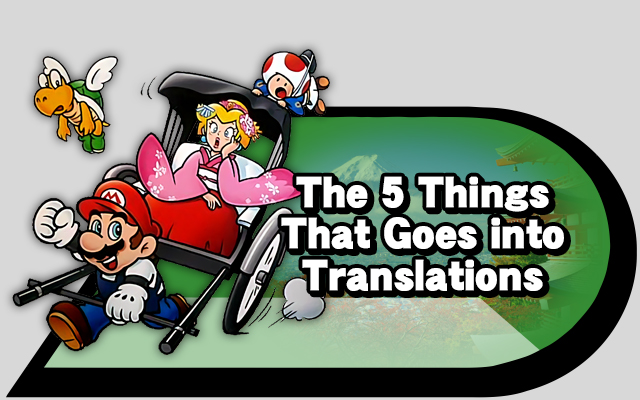Today, I would like to talk about the five things that goes into translations. Languages are extremely complex, and there is never a one-to-one representation of what something means in a different language. There will be things lost in translation, but the job of a translator is to ensure the original work is represented as much as possible.
- Knowing the Speaker and Audience
- Possessing Linguistic Proficiency
- Knowing the Source Material
- Recognizing the Format
- Being Aware of Cultural Differences
Translation is all about choice. After all, words carry a lot of meaning—much more than just their dictionary definitions. House, dwelling, crash pad, home, property, lodging, and crib essentially mean the same thing, but their respective usages evoke drastically different feelings.

When discussing his place of residence, Masahiro Sakurai would probably be best represented with “home” or “house.” However, if Keisuke Ogihara, a member of the Japanese hip-hop group Rip Slyme, was talking about his place of residence, it might be better suited translated as “crib.” Knowing not only your audience, but also the speaker, is essential when translating and is the first thing that goes into translation.
The second thing that goes into translation is the translator’s own ability. Being strong in both languages is critical. Being proficient in one language is not enough. This is something I’ve been working on myself. Soma and others often blow my translations out of the water because they figure out better ways to reword tricky sentences.
Another part of translation is knowing the source material well. This kind of relates to the first point, but it’s slightly different. For example, if you were to literally translate the Japanese for “clone characters” in Smash, it would be “model swap characters.” We don’t use the latter translation in English, however, so Source Gaming opts to use the former.
The fourth thing that goes into translation is recognizing the format. Where does the source exist? If it’s an interview, it might be better to use contractions, and to make the dialogue sound more casual. If it’s an announcement, it might be best to use formal language. Understanding how things are being communicated is essential.
The last thing is to be aware of culture. This is something that cannot be learned at school, but only through life experiences. “ご冥福をお祈りします” may literally mean “I pray for [their] happiness in the next world,” but it’s probably better to just translate it as “rest in peace.” There are several phrases that cannot be directly translated and rely completely on context. Translators need to recognize these, and judge accordingly in order to best represent the original speaker, and to not alienate their audience.
(In case you were wondering who Rip Slyme was)
- Smash Ultimate Development Timeline - May 16, 2020
- Straight from the Source: Koji Igarashi on Castlevania in Smash, Bloodstained - October 16, 2018
- Sakurai Discusses Isabelle, Echoes, and Newcomers - September 26, 2018











A lot of things we do goes unsaid, or unnoticed in just how much work is really involved in changing even the simplest of words. : ) I like these five points that point out all the things that need to be thought about, in addition to your previous article on it all being a choice.
It seems that as of late, some people don’t understand how a direct translation isn’t “more true” to the original creator/speaker’s intentions when presented to a different audience then originally intended.